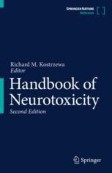Search
Search Results
-
Diverse activity of miR-150 in Tumor development: shedding light on the potential mechanisms
There is a growing interest to understand the role and mechanism of action of microRNAs (miRNAs) in cancer. The miRNAs are defined as short...

-
Integrating network pharmacology and experimental validation to decipher the mechanism of action of **gfang Granule in the treatment of viral myocarditis
This study investigated the mechanisms of **gfang Granule (JFG) in viral myocarditis (VMC) treatment via network pharmacology-based approach...

-
Neuroinflammation regulates the balance between hippocampal neuron death and neurogenesis in an ex vivo model of thiamine deficiency
BackgroundThiamine (vitamin B1) is a cofactor for enzymes of central energy metabolism and its deficiency (TD) impairs oxidative phosphorylation,...

-
DeepSTARR predicts enhancer activity from DNA sequence and enables the de novo design of synthetic enhancers
Enhancer sequences control gene expression and comprise binding sites (motifs) for different transcription factors (TFs). Despite extensive genetic...

-
Histone deacetylase 3 (HDAC3) as an important epigenetic regulator of kidney diseases
Development and progression of many kidney diseases are substantially influenced by aberrant protein acetylation modifications of gene expression...

-
Combining network pharmacology and experimental verification to reveal the mechanism of Chaigui granules in the treatment of depression through PI3K/Akt/mTOR signaling pathways
IntroductionChaigui granules are a novel manufactured traditional Chinese antidepressant medicine, which is originated from the ancient classical...

-
Role of HOXA9 in solid tumors: mechanistic insights and therapeutic potential
HOXA9 functioning as a transcription factor is one of the members of HOX gene family, which governs multiple cellular activities by facilitating...

-
Molecular evolutionary process of advanced gastric cancer during sequential chemotherapy detected by circulating tumor DNA
BackgroundEfficacy of conventional sequential chemotherapy paradigm for advanced gastric cancer (AGC) patients has largely plateaued. Dynamic...

-
Identification of Potential Biomarkers for Patients with DWI-Negative Ischemic Stroke
Ischemic stroke is the leading cause of long-term disability in adults, accounting for 80% of stroke cases. Diffusion weighted imaging (DWI)...

-
Genes in Axonal Regeneration
This review explores the molecular and genetic underpinnings of axonal regeneration and functional recovery post-nerve injury, emphasizing its...

-
Verapamil attenuates scopolamine induced cognitive deficits by averting oxidative stress and mitochondrial injury – A potential therapeutic agent for Alzheimer’s Disease
Alzheimer’s disease (AD) is a multifactorial disorder where amyloid beta (Aβ) plaques, Ca 2+ dysregulation, excessive oxidative stress, mitochondrial...

-
A multi-omics approach to elucidate okadaic acid-induced changes in human HepaRG hepatocarcinoma cells
Okadaic acid (OA), a prevalent marine biotoxin found in shellfish, is known for causing acute gastrointestinal symptoms. Despite its potential to...

-
Identification of Systems Level Molecular Signatures from Glioblastoma Multiforme Derived Extracellular Vesicles
Glioblastoma multiforme (GBM) is one of the most lethal malignancies of the central nervous system characterized by high mortality rate. The...

-
Tet3 Deletion in Adult Brain Neurons of Female Mice Results in Anxiety-like Behavior and Cognitive Impairments
TET enzymes (TET1-3) are dioxygenases that oxidize 5-methylcytosine (5mC) into 5-hydroxymethylcytosine (5hmC) and are involved in the DNA...

-
Protein regulator of cytokinesis 1: a potential oncogenic driver
Protein regulator of cytokinesis 1 (PRC1) is involved in cytokinesis. Growing evidence suggests the association of PRC1 with multiple cancers. Here,...

-
Off the Clock: the Non-canonical Roles of Cyclin-Dependent Kinases in Neural and Glioma Stem Cell Self-Renewal
Glioma stem cells (GSCs) are thought to drive growth and therapy resistance in glioblastoma (GBM) by “hijacking” at least a subset of signaling...

-
Huntington’s Disease and Neurodegeneration
Huntington’s disease (HD) is an autosomal dominant disorder caused by a CAG repeat expansion within the coding region of the Huntingtin (HTT) gene....
-
Stressor control and regional inflammatory responses in the brain: regulation by the basolateral amygdala
Increasing evidence has connected the development of certain neuropsychiatric disorders, as well as neurodegenerative diseases, to stress-induced...

-
Exploring the active components and potential mechanisms of Alpiniae oxyphyllae Fructus in treating diabetes mellitus with depression by UPLC-Q-Exactive Orbitrap/MS, network pharmacology and molecular docking
The growing incidence of diabetes mellitus (DM) and depression is a global public health issue. Alpiniae oxyphyllae Fructus (AOF) is a kind of...

-
DNA methylation and type 2 diabetes: a systematic review
ObjectiveDNA methylation influences gene expression and function in the pathophysiology of type 2 diabetes mellitus (T2DM). Map** of...

